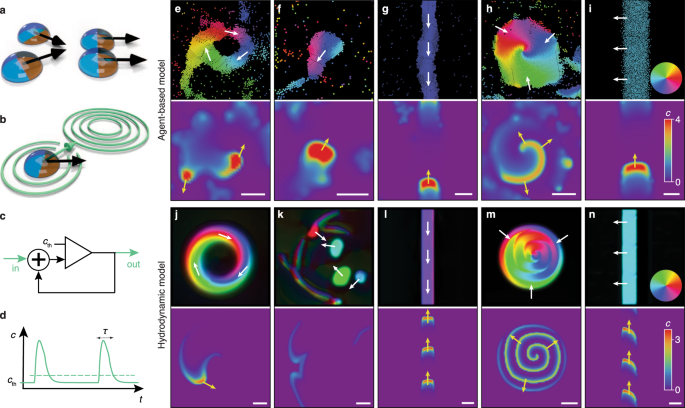2022-12-12 ノースカロライナ州立大学(NCState)
この技術に関する論文の共著者で、ノースカロライナ州立大学電気・コンピュータ工学部准教授のエドガー・ロバトンは、「この技術の素晴らしいところは、比較的安価な市販の部品を使って作られていることと、設計と人工知能ソフトウェアの両方をオープンソースにしていることです」と語っています。「私たちの目標は、このツールを広く公開して、できるだけ多くの研究者に使ってもらい、海洋、生物多様性、気候に関する理解を深めてもらうことです」。
Forabotと呼ばれるこの技術は、ロボット工学と人工知能を使って、有孔虫と呼ばれる生物の遺体を物理的に操作し、その遺体を分離、画像化、同定できるようにするものです。
有孔虫は植物でも動物でもない原生生物で、1億年以上前から海洋に広く生息している。植物でも動物でもない原生生物で、1億年以上前から海に生息しています。この貝殻から、フォラムが生きていた頃の海の特徴を知ることができる。また、貝殻を化学的に測定することで、貝殻が形成された当時の海の化学的性質や温度などを知ることができます。
しかし、フォラムの殻や化石を評価するのは面倒で時間がかかる。そこで、工学と古海洋学の専門家チームが、このプロセスを自動化するためにForabotを開発しました。
「現時点では、Forabotは6種類のフォラムを識別することができ、1時間あたり27個のフォラムを処理することができます。「これは概念実証のプロトタイプなので、識別できるフォラムの種類を増やしていく予定です。また、1時間あたりに処理できるフォラムの数も増やしていきたいと考えています。
“また、現時点では、Forabotのフォラムの識別精度は79%であり、これは訓練された多くの人間よりも優れています。”
フォラボの動作映像は、https://www.youtube.com/watch?v=nLkLIghc4Jg でご覧いただけます。
<関連情報>
- https://news.ncsu.edu/2022/12/fossil-sorting-robots/
- https://agupubs.onlinelibrary.wiley.com/doi/full/10.1029/2022GC010689
Forabot: 浮遊性有孔虫の単離と画像化の自動化 Forabot: Automated Planktic Foraminifera Isolation and Imaging
Turner Richmond,Jeremy Cole,Gabriella Dangler,Michael Daniele,Thomas Marchitto,Edgar Lobaton
Geochemistry, Geophysics, Geosystems Published: 29 November 2022
DOI:https://doi.org/10.1029/2022GC010689

Abstract
Physical inspection and sorting of foraminifera is a necessity in many research labs, as foraminifera serve as paleoenvironmental and chronostratigraphic indicators. In order to gain counts of species from samples, analyze chemical compositions, or extract morphological properties of foraminifera, research labs require human time and effort handling and sorting these microscopic fossils. The presented work describes Forabot, an open-source system which can physically manipulate individual foraminifera for imaging and isolation with minimal human interaction. The major components to build a Forabot are outlined in this work, with supplementary information available which allows for other researchers to build a Forabot with low-cost, off-the-shelf components. From a washed and sieved sample of hundreds of foraminifera, the Forabot is shown to be capable of isolating and imaging individual forams. The timing of the Forabot’s current pipeline allows for the processing of up to 27 foram specimens per hour, a rate that can be improved for future classification purposes by reducing image quality and/or quantity. Along with the physical descriptions, the image processing and classification pipelines are also reviewed. A proof-of-concept classifier utilizes a finetuned VGG-16 network to achieve a classification accuracy of 79% on a validation set of foraminifera images collected with Forabot. In conclusion, the system is able to be built by researchers for a low cost, effectively manipulate foraminifera with few mistakes, provide quality images for future research, and classify the species of imaged forams.
Key Points
- The Forabot is a low-cost and open-source system for automated isolation and imaging of foraminifera
- We explore Forabot performance as a physical manipulation tool
- Forabot images are classified using deep learning with promising results for future integration
Plain Language Summary
Foraminifera or “forams” are abundant microscopic organisms found in the ocean, and their shells are a common component of seafloor mud. Mud cores can be used to understand ancient ocean conditions, and the types and chemistry of forams in a sample are useful environmental indicators. However, separating different types of forams is slow and tedious work which requires considerable expertise. We have designed and built a robot called Forabot, which picks up individual shells, takes high-quality photographs of them, and moves them to a bin for sorting. We describe the system so that other researchers can build their own Forabot at low cost. The current version of Forabot is optimized for high-quality imaging and is therefore relatively slow, but if it is instead used for classifying and sorting shells into different types, it can be optimized for speed. We discuss the preliminary performance of a classifier based on artificial intelligence, with overall accuracy of 79%. In conclusion, our robot can be built by researchers for a low cost, effectively manipulate forams with few mistakes, provide quality images for future research, and accurately classify the type of foram.



